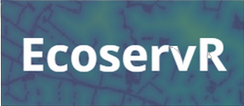TESSA (Toolkit for Ecosystem Service Site-based Assessment)
Visit Tool
The TESSA toolkit is an easy-to-use workbook that leads the user through the steps needed to assess the ecosystem services provided at a particular site. It is built around a comparison of the site in two alternative states, e.g. before and after restoration or conversion, and encourages a high level of stakeholder engagement. The toolkit was initially developed for conservation practitioners but can be used by anyone, including the private sector and those with no prior knowledge of ecosystem services. It includes an introduction to the concepts of ecosystem services and natural capital, guidance on how to conduct a preliminary scoping appraisal to identify important services and beneficiaries, decision trees to identify the best methods to use for each service, and links to a set of simple low-cost methods for measuring ecosystem services either qualitatively or quantitatively. Worked examples are provided, as well as instructions for collecting site-specific data where appropriate (including field surveys and stakeholder input). There is also guidance on how to communicate results to decision-makers.
Information Requirements
Input
Data gathered by the user for the site being assessed.
Output
Guidance; Quantitative data on ecosystem services; Tables / statistics / reports; Economic assessment; Cost-benefit assessment
Resource Requirements
Adobe acrobat to read the interactive pdf, plus 184 MB storage space.
How does it work?
The toolkit is based on an interactive pdf document which leads the user through a step by step approach to assess the main ecosystem services provided by the site under consideration (typically 100 – 100,000 ha). Preliminary guidance helps the user to select a suitable site, define the exact questions to be addressed (e.g., threats, pressures, drivers of change; what to implement), engage the relevant stakeholders and find out about the local political, environmental and socio-economic context. The first step is then a scoping appraisal to identify which are the most important services provided by the site. For each of these services, there is a choice of several assessment methods, including manual calculations using published data, stakeholder mapping, field surveys or modelling tools (options include use of the WaterWorld and Co$tingNature models). A decision tree for each service assessment helps the user to choose the most suitable method, given the available data and resources. Electronic links take the user to separate short pdfs which describe how to apply each method, and there are also links to additional guidance documents and case studies.
Detailed Information
Key data sources:
Peh et al. (2013) article in Ecosystem Services journal
Case study papers: Wicken Fen and Ouse Fen / Fen Drayton
Terrestrial, freshwater or marine focus?
- Terrestrial
- Freshwater
- Marine Focus
User Time Requirements:
Moderate – Usually 20-60 days in the UK where data are readily available, but longer if field survey and/or socio-economic work (participatory workshops and surveys) is required.
Developer Organisation
BirdLife International, University of Cambridge, RSPB, UNEP-WCMC, Anglia Ruskin University, University of Southampton and the Tropical Biology Association.
Publications
The website contains a list of publications http://www.birdlife.org/worldwide/science/tessa-publications and case studies http://www.birdlife.org/assessing-ecosystem-services-tessa/case-studies .

